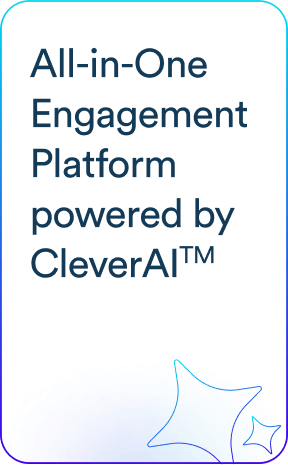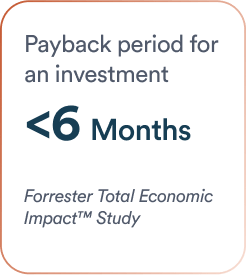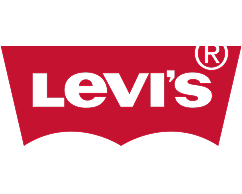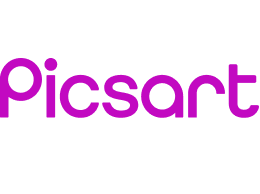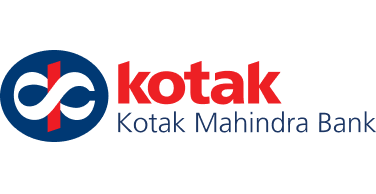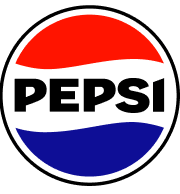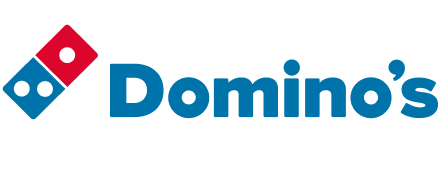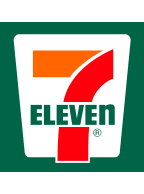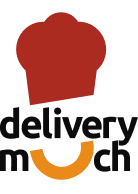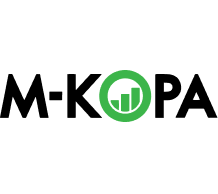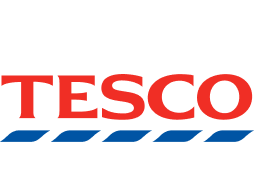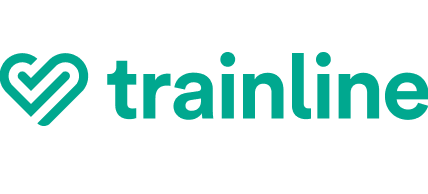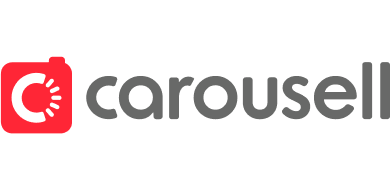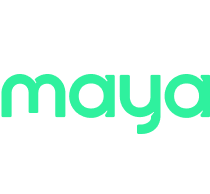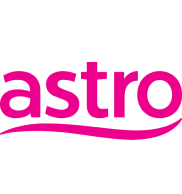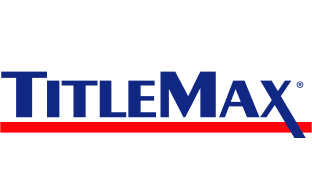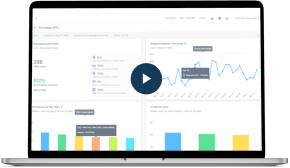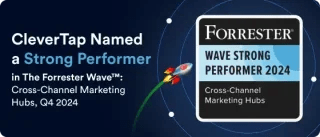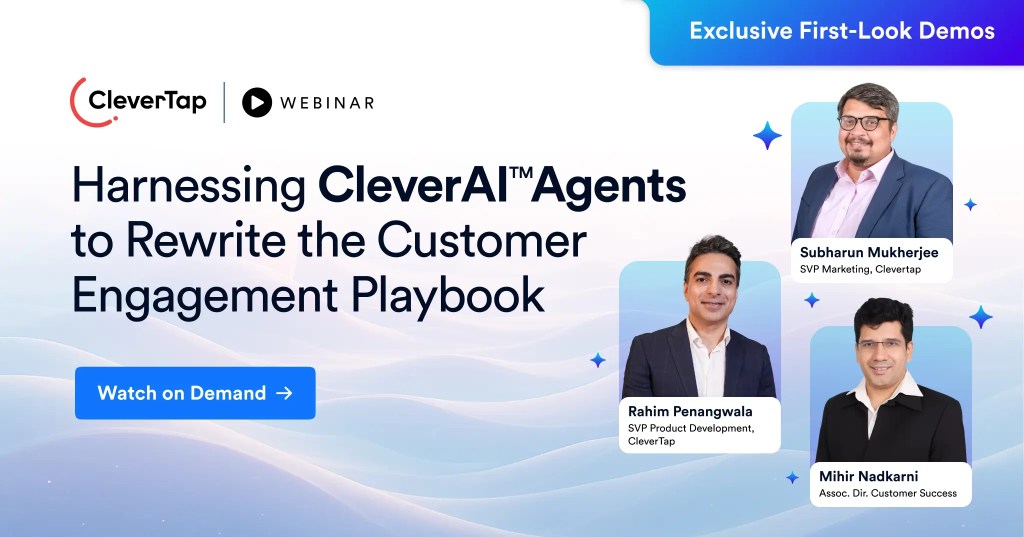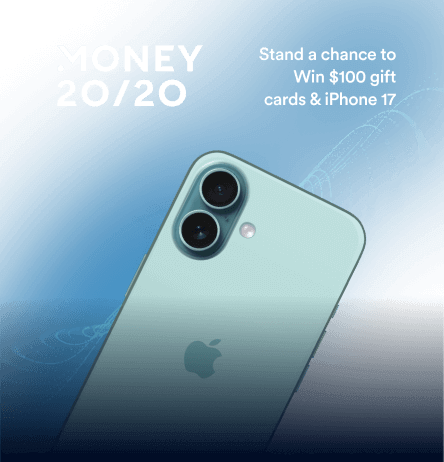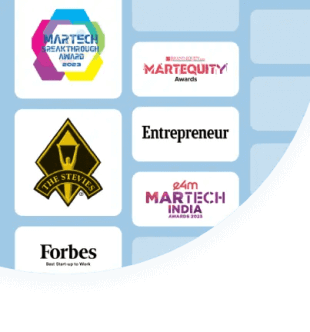Think email has lost its edge in a world dominated by Reels and Stories? Not quite. When done right, email marketing remains one of the most effective channels for building loyalty and boosting conversions. Here are 19 essential email marketing tips to help you craft a high-performing email marketing strategy.
With social media and other paid channels competing for the attention of marketers, email marketing strategies have undergone a significant upgrade in the last five years or so. Email remains the highest return-on-investment (ROI) generating tool by delivering $36 for every dollar spent, making its impact undeniable.
With 4.89 billion global email users, high-growth brands must invest in email marketing beyond using it as a communication tool. This blog covers 19 email marketing tips that maximize customer lifecycle impact on revenue generation and help you engineer email marketing strategies to make the best of every touchpoint across the customer journey.
Strategic Foundations for Email Growth
Email marketing begins with a strong strategic framework. This section outlines essential planning steps to align emails with the customer journey and ensure measurable outcomes.
1. Map Email Campaigns to the Customer Lifecycle
A single email cannot address customers at different stages of their lifecycle. For example, an email meant for customer acquisition won’t resonate with someone who is already a loyal customer. It is therefore essential to visualize the entire customer lifecycle and clearly define each stage.
After mapping the customer lifecycle, marketers can create targeted emails that speak directly to the needs, behaviors, and intent of each customer stage.
Here’s a breakdown of different customer lifecycle stages and emails relevant to each.
- Acquisition: Build a high-quality email list using lead magnets.
- Onboarding: Send welcome and onboarding email sequences with content guides that nurture product understanding.
- Engagement: Keep readers engaged with interactive emails, predictive recommendations, and dynamic content.
- Conversion: Personalize the email for high-intent users, include CTAs that convey urgency and the fear of missing out (FOMO).
- Retention: Provide VIP perks and implement customer loyalty programs through retention-focused email sequences.
- Reactivation: Provide offers and run re-engagement campaigns for inactive subscribers.
Here are some examples of email workflows triggered by a change in the customer lifecycle stage.
- When a new customer signs up, send a sequence of welcome emails and guide them to the next step.
- When they leave without adding anything to the cart, offer information on the different product benefits you offer
- When they leave without purchasing items added to the cart, provide personalized recommendations, alternatives, and promo codes or discounts.
- Once they have made a purchase, thank them for the purchase and share delivery details along with the invoice.
Marketers can automate these campaigns after mapping them to the customer lifecycle.
Explore 35 email marketing best practices to improve your campaigns.
2. Set Goals Using Attribution-Aware Metrics
Setting SMART goals is not enough if the only email marketing metrics being monitored are open or click rates. Focus on lifecycle and revenue-linked KPIs, such as:
- Customer Lifetime Value (LTV) Impact: The amount of money a user will spend throughout their relationship with the business. It signifies the long-term value email contributes per user.
- Repeat Purchase Rate: Percentage of customers who are repeat buyers. It measures whether email nudges first-time buyers into becoming loyal customers.
The chosen attribution model determines which touchpoints get credit. It also influences how email performance is interpreted.
- Last-Touch Attribution: Assigns full credit to the final touchpoint before a conversion. It focuses on the immediate influence of the last interaction without assigning much value to the preceding customer journey.
- First-Touch Attribution: Assigns credit to the first interaction a user has with the business and helps understand how email contributes to top-of-funnel activation.
- Linear Attribution: Distributes equal value across all touchpoints, considering the role of each interaction in a conversion.
- Time-Decay Attribution: Assigns more credit to interactions closer to conversion as compared to the ones at the beginning of the customer journey.
- Data-Driven Attribution: Uses machine learning to assign fractional credit based on actual conversion influence.
3. Build a Content and Testing Calendar
A robust email marketing strategy involves detailed planning. Streamline the process by building a calendar that aligns email content, engagement triggers, and windows for testing variants with customer lifecycle stages.
To execute this effectively, follow this step-by-step guide to building a content and testing calendar
Step 1: Map campaigns to customer lifecycle: Set up email campaigns that meet the requirements of customers at different stages of their lifecycle.
Step 2: Define Content Theme and Cadence: Plan content for each stage, such as welcome offers and brand story for customer acquisition, setup guides and tutorials during onboarding, social proof and testimonials during engagement, offers and discounts for conversion, loyalty perks for retention, and win-back campaigns for reactivation. Set the timing and frequency (Day 0, Day 3, Day 7 sequences) in the calendar.
Step 3: Schedule Testing Windows: Allocate specific weeks in a month for testing, instead of running them ad hoc. Test with adequate sample sizes and holdout groups for statistical significance.
Step 4: Review Test Iterations at Intervals: Set up periodic review cycles to assess engagement metrics and behavioral trends across lifecycle stages. Use these insights to optimize messaging and cadence.
Step 5: Share the Calendar: Use a collaborative calendar that can be easily shared among the marketing, product, and data teams for better alignment.
Step 6: Use Automation: Sync the calendar with a marketing automation platform to trigger emails and set up dynamic workflows that can be changed based on user behavior and testing results.
Discover email copywriting tips to create compelling, high-converting emails.
4. Use Modular Email Architecture
Design emails with reusable blocks like the following:
- Headers
- Hero images
- Dynamic product grids
- Testimonials
- CTAs
- Footers
This email marketing strategy will speed up design production, ensure consistency, and allow the rapid A/B testing of specific components without rebuilding entire emails.
For example, change only the CTA across campaigns while keeping the rest of the layout intact to test which one works. Email marketing automation platforms like CleverTap support building a modular email architecture.
5. Engineer for Deliverability and Inbox Placement
Set up email authentication protocols to ensure email deliverability to the user’s inbox and not the spam folder.
- Sender Policy Framework (SPF): Verifies the sender’s legitimacy by allowing domain owners to specify which IP addresses are authorized to send emails on their behalf.
- DomainKeys Identified Mail (DKIM): Adds a digital signature to verify the email hasn’t been tampered with.
- DMARC (Domain-based Message Authentication, Reporting & Conformance): Aligns SPF and DKIM and sets policies for handling failed checks
To maintain inbox health and a strong sender reputation, implement these monitoring tools and best practices:
- Google Postmaster Tools: Track domain reputation, spam rates, and feedback loop data directly from Gmail.
- Dedicated IP Monitoring: Use services like Sender Score and Barracuda Central to assess IP reputation, affecting email deliverability.
- Inbox Placement Testing: Use seed testing to measure your actual Inbox placement.
- Proactive List Hygiene: Regularly clean lists using hard or soft bounce data, suppress unengaged users, and monitor engagement trends across ISPs.
Data-Driven Segmentation and Personalization Email Strategies
Personalized communication starts with quality data-driven email marketing and meaningful segmentation. The following email marketing strategies explain how to tailor messages based on user behavior and preferences.
6. Build Lists with First- and Zero-Party Data
Good email marketing strategies are built on data and a quality email list. Marketers need to collect first- and zero-party data to build such lists.
- First-Party Data: Data collected directly from user interaction with the business, such as user preference, browsing behavior, purchase history, and feedback.
- Zero-Party Data: Data users intentionally and voluntarily share with the business. Such data can be collected using opt-in experiences such as preference centres, surveys, polls, trivia games, contests, and giveaways.
Use progressive profiling to gradually gather user information over time instead of gathering all user data at once. This method is non-invasive, provides a better user experience, and focuses on collecting contextual data.
For e-commerce email marketing, gather the user’s location first and then use future communications to learn about their style preferences and shopping intent.
The data can then be automatically synced to your Customer Relationship Management (CRM) tool or Customer Data Platform (CDP) using API or native integration. This seamless data flow enables precise email segmentation, personalized campaigns, and dynamic lifecycle automation.
7. Segment Using RFM and Behavioral Triggers
Go beyond the basic demographic, behavioral, and psychographic segmentation and segment based on the following:
- Recency: How recent was their last purchase?
- Frequency: How often do they make a purchase?
- Monetary Value: How much do they spend?
This is called the RFM analysis aka, recency, frequency, monetary value analysis. It segments customers based on their buying behavior by focusing on what they buy instead of who they are.
Here’s an example of real-time behavioral triggers for an e-commerce audience segmented using RFM analysis.
- Send email sequences with dynamic recommendations and low-stock alerts for customers who have viewed a product or browsed a category in the past 24 hours.
- Frequent shoppers are more engaged and satisfied. Send emails with upselling recommendations or related products.
- High spenders can be rewarded with early access, prime memberships, and other loyalty perks. Myntra Insider is a good example of RFM implementation.
8. Personalize Emails with Dynamic Content Blocks
Personalization runs deeper than mentioning first names. Emails with dynamic content blocks allow recipients to see different content on the same email template. The content varies with user data to maintain relevancy.
Here are three examples of content block-level personalization:
- Recommend products based on past purchases or browsing history.
- Use location-based marketing with discounts specific to a particular location. This works well for exclusive offers when a new store opens in or near the user’s location.
- Use dynamic pricing and offer more discounts for repeat buyers to reduce cart abandonment.
9. Automate Using Event-Triggered Workflows
Replace time-based email drip campaigns with event-triggered workflows. Automate these sequences based on specific user behavior and actions.
- If a user leaves the page without adding anything to their cart, trigger emails with product benefits and social proofs.
- If onboarding is incomplete (created an account, but made no purchase), trigger a nudging sequence with a step-by-step guide or provide incentives.
- Identify and celebrate loyalty milestones with rewards.
10. Test Campaigns with Multivariate and Behavioral Logic
Multivariate testing makes more sense when you are using dynamic content blocks. You can compare two versions of an email to see which one performs better in A/B testing. Whereas in multivariate testing, you can simultaneously test multiple emails with varying elements, such as:
- Subject Lines
- CTAs
- Visuals
- Product Recommendations
And more.
Multivariate testing requires a larger sample size, which increases with the number of variables to be tested. Experiment with sample sizes to get statistically significant results for a valid test and limit the number of variables per test to maintain clarity. Use insights to set up iteration frequency.
Pair multivariate testing with behavioral segment targeting. For example, run tests separately for cart abandoners and high-value customers to identify what resonates best with each group.
11. Optimize Send Time and Frequency with AI
Leverage AI in email marketing to predict optimal send times and personalize frequency by analyzing user behavior history. The algorithm studies past engagement patterns to identify periods when subscribers are most active. This ensures your emails are always at the top of the recipient’s inbox.
AI email marketing tools also automatically adjust the frequency of emails by detecting early signs of subscriber fatigue. Implement frequency capping based on engagement scores and activity thresholds. For example, do not send more than three emails per user in a week.
Use fallback channels when engagement drops or email frequency caps are reached. Automatically shift the outreach to other channels like SMS, push notifications, or in-app messages, depending on the subscriber’s channel preference.
Automate, personalize, and optimize every email with the power of Clever.AI.
12. Apply Suppression Logic to Protect Engagement
Too many emails can overwhelm subscribers. Besides optimizing send-time and frequency with AI, marketers can also apply suppression strategies to protect long-term engagement. To suppress means to exclude opted-in subscribers from your emails. Here are three key suppression strategies:
- Engagement-Based Suppression: Suppress users who haven’t engaged (clicked or opened) with an email in the last 60 or 90 days.
- Time-Based Inactivity Filters: For dormant users (no email interaction in 180+ days), isolate into a reactivation cohort or suppress after the failure of repeated attempts.
- Hard Bounce and Spam Management: Automate suppression of email addresses that hard bounce or match known spam-trap databases. This protects the sender’s reputation.
Intelligence, Analytics, and Iteration Email Marketing Strategies
Once foundational strategies are in place, analyzing performance becomes critical. This section focuses on measuring impact, learning from user behavior, and refining email marketing tactics over time.
13. Track Deeper Metrics, Not Just Open Rates
An underrated email marketing tip is to focus on outcome-based metrics rather than vanity metrics. Instead of the generic click rates and open rates, track the following:
- Click-To-Open-Rate (CTOR): Measures content relevance by calculating the number of unique clicks as a percentage of email opens.
- Revenue per Email: Measure this metric to quantify the financial impact of the email marketing strategy.
- Retention Rate: Measure the percentage of email subscribers existing or retained over a time period.
- Campaign Return-On-Investment (ROI): The amount generated from an email campaign compared to the cost of running it.
One can go deeper by tracking these metrics by cohort and segment, as discussed in the next point.
14. Conduct Cohort and LTV-Based Analysis
Cohort analysis groups users based on a shared event or characteristic and tracks how they behave over time. For example, compare how users who signed up in January respond to a welcome email series versus those who signed up in March. Compared to looking at campaign results in isolation, cohort analysis acts as a long-term lens.
Combine this with lifetime value (LTV) analysis by segment or email stream. Measure whether cohorts in a reactivation journey generate more revenue or repeat purchases than those in a standard promotional stream. This approach helps identify email marketing strategies with sustainable impacts.
15. Deploy Win-Back Campaigns Using Decay Models
Define inactivity thresholds and layer that with historical behavioral patterns to devise re-engagement or win-back email campaigns. For instance, a user who previously purchased monthly but hasn’t engaged in 45 days signals stronger churn risk than an infrequent buyer. Use this behavioral baseline to trigger tailored win-back campaigns, offering personalized incentives or content based on predicted value.
Here’s an example of campaign flows with conditional offers tailored to customer value tiers:
- If a high-LTV customer hasn’t made a purchase in 60 days, trigger a personalized email with a VIP discount.
- For lower-value segments, test softer reactivation nudges like product updates or wishlist reminders.
- Include conditional branching. If the user clicks but doesn’t convert, follow up with a limited-time offer.
16. Automate Compliance and Consent Tracking
Ensure your consent management is scalable with regional laws like GDPR, CCPA, CAN-SPAM, and others. A centralized and flexible framework to capture, store, and update user permissions in real-time is a prerequisite.
Here are some scalable consent management strategies:
- Granular Consent Capture: Let users choose specific communication types like promotions, updates, and surveys, rather than blanket opt-ins.
- Timestamp Audit Trails: Record when, where, and how consent was given. This is critical for legal proof.
- Dynamic Preference Centres: Allow users to update their preferences at any time, including channel, frequency, and content types. Adapt consent forms and default settings based on user location.
- Real-Time Sync Across Channels: Ensure suppression lists and consent status are consistent across email, SMS, push, and CRM platforms via API or native integrations.
17. Adapt Journeys in Real-Time Based on User Behavior
Change personalized email journeys mid-stream to respond to user behavior in real time. Instead of a generic drip sequence, adapt your email journeys based on user action. Here’s an example of how you can use branching logic to adapt emails to user needs.
Example: Click vs. No Click
- Send the first email with two featured product recommendations.
- If a user clicks on Product A, send follow-up email highlighting similar items or a limited-time offer on Product A. Set up a similar journey for Product B.
- If there’s no click within 48 hours, resend with a stronger CTA or a different content variant.
Omnichannel and Cross-Channel Integration Email Strategies
Email doesn’t operate in isolation. These techniques help integrate email with other channels to create a cohesive customer experience across touchpoints.
18. Sync Email with Push, In-App, and SMS Journeys
Omnichannel marketing has a stronger impact on the customer lifecycle than multichannel marketing. It ensures that communication flows seamlessly across channels like push, in-app, and SMS, based on context and behavior. For example, if a subscriber ignores a cart abandonment email, within 24 hours, escalate to a time-sensitive SMS reminder with a promo code.
Use cross-channel logic to define primary and secondary channels per lifecycle stage, factoring in user preferences and engagement history. In the example above, email was the primary channel and SMS the secondary.
Implement fallback messaging when a user hits frequency caps or fails to engage with email. Coordinate timing across touchpoints to avoid overlaps or fatigue.
Learn how to run customer lifecycle email campaigns in this detailed guide.
19. Integrate Real-Time Content and Recommendations
Use product APIs and personalization engines to make the most of dynamic content blocks. These tools update the dynamic content blocks based on user context and live data at the time of email opens.
Personalization engines and embedded API calls pull in real-time elements, such as
- Inventory-based urgency, like ‘Only 2 left in stock!’, is pulled from SKU-level data.
- Geo-specific promotions based on the recipient’s location can show store availability, weather-tied deals, or local shipping deadlines.
- Trending products based on live site engagement or purchases within the last hour.
How CleverTap Powers Advanced Email Marketing Strategies
CleverTap is a customer engagement platform with advanced email marketing strategies. 2000+ brands trust CleverTap’s ability to boost email conversion rates and increase open and click rates because of the advanced features mentioned below.
- Smart Personalization & AI Optimization: Clever.AI powers hyper-personalized engagement with tools like Scribe, which generates emotionally intelligent subject lines and headers to boost open rates by aligning with user psychology. Meanwhile, IntelliNODE continuously experiments with different journey paths in real time and routes users through the highest-converting sequence, significantly increasing campaign efficiency and ROI.
- Effortless Email Creation: Use CleverTap’s visual drag-and-drop email editor, HTML, and AMP modules for flexible design. Speed up campaign creation with ready-to-use and customizable templates. Get dark/light mode rendering and preview support across 90+ email clients.
- Advanced Testing and Timing: Conduct A/B and multivariate tests on subject lines, layouts, and content to identify the most effective versions. CleverTap also determines and automates the best time and frequency to send messages, using behavioral data and user time zones to maximize engagement.
- Real-Time Analytics and Deliverability Insights: Generate real-time reports on key performance metrics like open, click, bounce, and spam rates. The platform also performs spam root cause analysis, offers inbox placement monitoring, and automatically appends UTM parameters to assess campaign-level email marketing ROI.
- ESP Flexibility and Setup: Use CleverTap’s integrated Email Service Provider or continue with their existing ESP. Setup support includes domain authentication (SPF, DKIM), dedicated IP management, IP warm-up scheduling, and deliverability alerts to maintain sender reputation and ensure inbox placement.
- Omnichannel Campaign Orchestration: Integrate email campaigns into journeys seamlessly with other channels such as WhatsApp, Push Notifications, and Web Messaging. CleverTap enables you to create create lifecycle-triggered email journeys that maintain continuity across the entire customer experience, driving retention and maximizing customer lifetime value.
Boost your email marketing performance and drive higher conversions with CleverTap
Email Marketing Statistics
Email marketing has become a must for brands looking to stay competitive, making a successful email marketing strategy the need of the hour. A look at the numbers reveals just how impactful a well-crafted email campaign can be for any business. Consider the following email statistics:

Design Email Campaigns that Drive Results
All email marketing campaigns need a robust strategy backing them. Focus on SMART goals and data-driven segmentation to run relevant campaigns that foster engagement. Modernize your email strategies by incorporating personalization and automation. Test different variations to determine the best-performing one.
Ensure you invest in a feature-rich email marketing platform and implement the strategies discussed in this blog for your next campaign to see measurable results.
Use CleverTap to elevate your email marketing strategy to drive meaningful leads via holiday campaigns—explore these 4th of July email marketing examples for inspiration.
Shivkumar M 
Head Product Launches, Adoption, & Evangelism.Expert in cross channel marketing strategies & platforms.
Free Customer Engagement Guides
Join our newsletter for actionable tips and proven strategies to grow your business and engage your customers.

